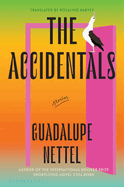
| Publisher: | Bloomsbury | |
| Genre: | Short Stories (single author), Family Life, General, Literary, Fiction | |
| ISBN: | 9781639734924 | |
| Pub Date: | April 2025 | |
| Price: | $25.99 |
| Starred | Fiction |
by Guadalupe Nettel, trans. by Rosalind Harvey
Mexican writer Guadalupe Nettel's The Accidentals contains eight poignant first-person stories of people seeking to make connections and right the wrongs of the past.
In "Imprinting," a woman stumbles on her estranged uncle while visiting another patient at the hospital. Will the bond they form be enough to heal a long-running family feud? Several stories have a similar focus on dysfunctional families. The narrator of "The Fellowship of Orphans" recognizes a man from a missing person poster and calls the man's mother, but the would-be good deed has a sinister result. In "A Forest Under Earth," a backyard tree symbolizes its owners; when it starts dying, one confesses, "I'm scared about what's going to happen with us."
The title story, too, pivots on a powerful nature metaphor. Camilo is obsessed with returning to Uruguay, from which he was exiled--just as albatrosses return to within "a few feet from where they were born." Excellent fable-like narratives incorporate gentle magic to explore characters' regret and longing. In "The Pink Door," a 60-something man discovers a shop with candy that makes him younger but alters his family in unexpected ways. "Life Elsewhere" is a cautionary tale about a failed actor who insinuates himself into the lives of the tenants whose apartment he'd coveted. "The Torpor" takes the Covid-19 lockdowns to an extreme, imagining repression--and depression--15 years on.
Nettel, whose 2023 novel, Still Born, was shortlisted for the International Booker Prize, ponders family ties and the sense of home in these varied and incisive stories. --Rebecca Foster, freelance reviewer, proofreader and blogger at Bookish Beck
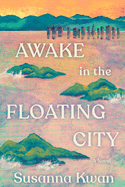
| Publisher: | Pantheon | |
| Genre: | Dystopian, Literary, Fiction, Asian American & Pacific Islander | |
| ISBN: | 9780593701409 | |
| Pub Date: | May 2025 | |
| Price: | $28 |
| Starred | Fiction |
by Susanna Kwan
Artist/writer Susanna Kwan turns her native San Francisco into a watery wasteland in her elegiac debut novel, Awake in the Floating City. After seven years of rain, the third floor is now the ground floor in the high-rise where Chinese American artist Bo rents a 77th-floor studio. Most everyone she knows has left, "gone to Greenland or Siberia or Maine." Her cousin Jenson, in British Columbia, wants to extricate her, ever since "the big storm" swept her mother away. Her art has completely stalled.
But a handwritten note slid under her door is desperation Bo can't ignore: "I need help.... Three days a week, afternoons. Can pay in cash." Mia, a Chinese immigrant on the 51st floor, is a "supercentenarian"--about 130 years old--one of the elderly who "found themselves abandoned by family to survive personal and regional crises alone." Bo's appearance at Mia's door begins a relationship that will be renewing for Bo, soothing for Mia, and undeniably transformative for both.
Kwan nimbly constructs a dystopic San Francisco populated by the leftover few. Impermanence is delicately threaded throughout--disappearing landscapes, buildings, landmarks, records, archives. But Kwan also deftly intertwines centuries of Asian American history--the Chinese Exclusion Act, Angel Island, Executive Order 9066, ethnic studies, widespread anti-Asian hate--tracking the challenges of being repeatedly rejected, exoticized, misrepresented, othered. Even as communities dwindle, people remain connected to the past--witnesses to suffering, claimants to joy. Hearing Mia's endless stories reinvigorates Bo's need to create, and Mia's memories, "twisted with hers," gives Bo the clarity to consider "her future, ready to be met." --Terry Hong
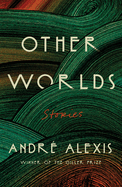
| Publisher: | FSG Originals | |
| Genre: | Short Stories (single author), Literary, Fiction | |
| ISBN: | 9780374611408 | |
| Pub Date: | May 2025 | |
| Price: | $18 |
| Fiction |
by André Alexis
One doesn't have to leave Earth's atmosphere to feel as if one is on another planet. Feelings of estrangement can happen anywhere. The Trinidad-born Canadian author André Alexis (The Hidden Keys; Days by Moonlight) experiments with the multifaceted concepts of connection and belonging in Other Worlds, his assured collection of nine stories. Some of these works are indeed otherworldly, among them "Contrition: An Isekai," in which a Trinidadian sorcerer dies in 1857 and is reincarnated 100 years later as a seven-year-old boy in Ontario. Then there is "Winter, or A Town Near Palgrave," a skin-crawler that puts a writer looking for solitude in a town north of Toronto, where a patron tells him that his caretaking duties include rubbing balm on large sacks hanging inside of houses. The only advice? "Stop immediately if you hear groaning."
The more down-to-earth offerings in this brilliant collection also have the power to disconcert. They include "A Certain Likeness," where a 40-ish archivist begins a relationship with an artist in his 60s, a man who slept with her mother many years earlier and may or may not be the archivist's father; "A Misfortune," the tale of a middle-aged woman dealing with the guilt of having accidentally shot her father when she was six; and "The Bridle Path," a perceptive meditation on class and servility in its story of a tax attorney from a modest background who befriends a wealthy couple. No one in these stories is quite where they belong, and that's part of the fun of this constantly surprising assortment. --Michael Magras, freelance book reviewer
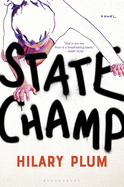
| Publisher: | Bloomsbury | |
| Genre: | Women, Literary, Political, Fiction | |
| ISBN: | 9781639735433 | |
| Pub Date: | May 2025 | |
| Price: | $26.99 |
| Fiction |
by Hilary Plum
In the revelatory and impassioned State Champ by Hilary Plum (Strawberry Fields), a receptionist at a reproductive health clinic goes on a hunger strike to protest her boss's imprisonment after defying their midwestern state's strict abortion law.
Angela Peterson, writing on exam-table paper in the closed clinic where she once worked, chronicles her hunger strike by the day. She explains that she's protesting--wasting to such a size that "the roaches could carry [her]," letting her mouth rot "like an old rape kit"--because her boss should not be in prison for helping people. Angela discusses myriad topics, such as how the father of gynecology experimented on enslaved Black women, and how the U.S. has "this great system where if you're raped you won't go to jail, but then neither will he." She also reveals aspects of her own life (her mom's death, an eating disorder, DUIs, arrests, getting banned from competitive running, dropping out of college), establishing a rapport with readers.
Angela's fury about the abortion law and for infringed freedom flies from the pages, and the ferocious pacing of her stream-of-consciousness narrative mirrors the runner dormant within her. Yet Plum's searing prose also smartly pauses, much like how time lags for Angela as she starves herself ("Yesterday I was trying to remember every half-stack of Pringles I've ever eaten. Didn't I, one time, balance a joint, still smoking, on the mythical curve of a Pringle?"). Life dwindles from Angela's politicized body but not from her purpose in this sharp, incisive, and galvanizing portrait of a woman exerting her choice. --Samantha Zaboski, freelance editor and reviewer
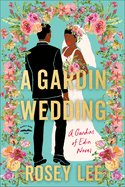
| Publisher: | Waterbrook Press | |
| Genre: | Women, African American & Black, Fiction | |
| ISBN: | 9780593445518 | |
| Pub Date: | May 2025 | |
| Price: | $17 |
| Fiction |
by Rosey Lee
Family drama, love, and romance reside at the heart of A Gardin Wedding, the second installment in Rosey Lee's redemptive, soul-searching series about four Southern Black women who all live in Edin, Ga.
Lee established her well-drawn, multigenerational cast in the first book, The Gardins of Edin, which explored how four biblically named women serve as shareholders in a multimillion-dollar family business, Gardin Family Enterprises, the legacy of their enslaved ancestors. Mary and Martha are sisters, Naomi is a peacekeeping surrogate matriarch to them, and Ruth is a cousin by marriage. Family tension and trust issues have challenged the company, now operated by widowed Ruth, and forced the women to grapple with competing ideas for the business and secrets embedded in their personal and professional lives.
A Gardin Wedding focuses on Martha Gardin, a 38-year-old successful doctor--and a high-strung social climber--who falls for wealthy eligible bachelor Oji Greenwald. When Oji proposes, Martha believes her romantic dreams will now come true. But an emergency befalls Oji's family and the crisis brings out the true colors of the power couple--and emphasizes how Oji's leery mother ostracizes Martha, who feels slighted and left out. The emotional complexities of this messy romantic predicament play out while the Gardin family also opens a new restaurant inside a redevelopment project of Oji's real estate investment company.
Ideas of forgiveness, love, and acceptance are threaded throughout Lee's hopeful, vivid portrayal of complications imbued in contemporary family life. -- Kathleen Gerard, blogger at Reading Between the Lines
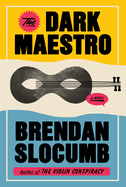
| Publisher: | Doubleday | |
| Genre: | Crime, General, Coming of Age, African American & Black, Fiction | |
| ISBN: | 9780593687611 | |
| Pub Date: | May 2025 | |
| Price: | $29 |
| Fiction |
by Brendan Slocumb
Brendan Slocumb's gripping third novel, The Dark Maestro, takes readers on a breathless ride through the worlds of classical music, illegal drugs, and witness protection, as a young Black superstar cellist fights the drug lords who sent him into hiding.
Growing up in the projects of southeastern Washington, D.C., cello prodigy Curtis Wilson's music gains him access to a new life: glittering concert halls, a Juilliard degree, widespread acclaim. But when his dad, Zippy, gives evidence to the FBI that implicates his former bosses, Curtis and Zippy (and Zippy's longtime partner, Larissa) must go into hiding to survive. Bereft without his music, Curtis eventually hatches a plan to get his life back by tapping into the "Dark Maestro" superhero persona he imagined as a kid.
Slocumb (Symphony of Secrets; The Violin Conspiracy) highlights the contrasts between the rarefied classical music realm Curtis enters and the desperately poor one of his childhood: opulent receptions versus cockroach-infested slums, privilege and power instead of addiction and hopelessness. Larissa, a former drug runner herself, has found her life's purpose in helping young women obtain a way out, aiding them with job training, child care, and emotional support. Her ability to straddle the underworld and the legitimate workforce proves valuable in Curtis's quest, as does Zippy's talent for numbers and spreadsheets, plus their collective determination to succeed where the FBI failed.
Propulsive and gritty, yet suffused with the fierce love of family, The Dark Maestro weaves together themes of ambition, justice, and stubborn hope--with a side of fiendishly clever musical revenge. --Katie Noah Gibson, blogger at Cakes, Tea and Dreams
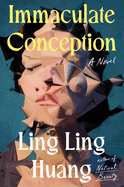
| Publisher: | Dutton | |
| Genre: | Horror, General, Satire, Fiction, Asian American & Pacific Islander | |
| ISBN: | 9780593850435 | |
| Pub Date: | May 2025 | |
| Price: | $28 |
| Fiction |
by Ling Ling Huang
Ling Ling Huang's Immaculate Conception is a dazzlingly ambitious feat of storytelling. The narrative revolves around the bond between Mathilde and Enka, two artists, one privileged in many ways, the other decidedly not, at least initially. Narrator Enka befriends the intimidatingly talented Mathilde during their first year at art school and feels continually inferior to her friend's knowledge, growing acclaim, and confidence.
As they mature and their paths diverge, Enka becomes more and more obsessed with Mathilde's life and work. Huang expertly portrays Enka's inner turmoil, her constant struggle between admiration and envy, love and resentment. Mathilde is a brilliant artist, but also deeply traumatized. Her vulnerability makes her intermittently dependent on Enka, who sees her role as Mathilde's caretaker, even at the expense of the latter's agency. Huang depicts with precision the subtle power dynamics that exist between them--the one-sided competition and the ever-present threat of betrayal.
Meanwhile, they exist in a dystopic, chillingly plausible world in which societal inequities are amplified and technology is employed to maintain a rigid social order. Ultimately, Enka uses her husband's research involving a technology called SCAFFOLD, which allows individuals direct access to another person's brain, their thoughts, their creativity, and full interiority. The stated purpose is to help Mathilde bear her emotional burdens, but Enka's motives are hardly pure.
Huang's (Natural Beauty) style is as captivating and distinctive as the story itself, with incisive prose that is alternately evocative, funny, and caustic. Immaculate Conception investigates the dark side of ambition, the seductive power of technology, and the complex nature of human relationships--a simmering rumination on covetousness, resilience, and atonement. --Elizabeth DeNoma, executive editor, DeNoma Literary Services, Seattle, Wash.
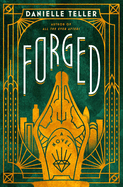
| Publisher: | Pegasus | |
| Genre: | Women, Crime, General, Fiction, Historical | |
| ISBN: | 9781639369430 | |
| Pub Date: | May 2025 | |
| Price: | $27.95 |
| Fiction |
by Danielle Teller
Danielle Teller's clever second novel, Forged, follows the journey of a scrappy young woman determined to outwit her circumstances. Through Fanny Bartlett's ingenious rise from naïve farm girl to polished society matron, Teller examines the hollow facades of Gilded Age society and explores whether reinventing oneself is truly possible.
Fanny is desperate to escape her isolated village and abusive father, so she sets out for Cleveland, Ohio, in search of her missing sister, Betsy. After a rough start in the city, Fanny makes her way first as a parlor maid, then as a companion to young socialite Mae Garth. The proximity to Mae's family wealth is intoxicating, and Fanny reinvents herself as Kitty, a genteel but penniless young woman. She fashions a glittering new life through her wit, charm, sleight of hand, and (later) expert forging skills. Eventually, "Kitty" makes a respectable marriage, begins trading on the stock market, and builds a financial empire. But like Jay Gatsby, Tom Ripley, and other famous deceivers, her past eventually catches up to her.
Teller (All the Ever Afters) highlights the temptations of wealth, the rigid class strictures of American society, and the loneliness of living a double life. Fanny's smarts and resourcefulness help to sustain her deception, but she knows her house of cards is fragile--and her connection to Mae may prove her undoing.
With a propulsive pace reflective of its Industrial Age setting, Forged depicts the rise of a complicated heroine and asks pointed questions about what is truly valuable. --Katie Noah Gibson, blogger at Cakes, Tea and Dreams
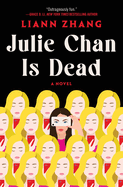
| Publisher: | Atria | |
| Genre: | Psychological, Women, Horror, General, Thrillers, Fiction, Asian American & Pacific Islander | |
| ISBN: | 9781668067895 | |
| Pub Date: | April 2025 | |
| Price: | $28.99 |
| Mystery & Thriller |
by Liann Zhang
Chinese Canadian author Liann Zhang heightens the twins-separated-at-(not quite)-birth trope into a savvy, deliciously satisfying debut novel, Julie Chan Is Dead. Chloe Van Huusen and Julie Chan are identical twins; at four, a drunk driver killed their parents. Chloe's fast-track adoption placed her with a wealthy white couple who insisted on a single child. Julie landed with their aunt, "a penny-pinching, foul-mouthed Cantonese woman," who only took her for the adoption subsidy.
The twins' reunion happened 17 years later when Chloe, now a high-profile influencer, arrived unannounced (with a film crew) at Julie's supermarket cashier job to gift her a house. Her performative magnanimity earned 10 million views in two days before she disappeared again from Julie's life. Three years later, Chloe calls Julie; she repeats "mistake" and "I'm sorry" before disconnecting. Panicked, Julie heads to Chloe's New York City penthouse and finds her corpse. Chloe's doorman, neighbor, even the police assume Julie is Chloe. "Is it really fair for Chloe's life to go to waste?" Julie reasons. With surprising ease, she becomes Chloe overnight, assuming Chloe's coveted position among the elite influencers. Might all that affirming love and easy luxury have a poisonous price tag?
As propulsive as a cinematic thriller, Zhang exposes addictive social media, racial inequities, rotting wealth, flexible morality--even extreme moments featuring loyalty tests with newborn mice and a human sex toy. "Too much" might apply to the too-long section involving a private island retreat, but any missteps fade with the brilliance of the shocking, shrewdly plotted finale. --Terry Hong

| Publisher: | Mira | |
| Genre: | Horror, Ghost, Fairy Tales, Folk Tales, Legends & Mythology, General, Supernatural, Thrillers, Fiction, Asian American & Pacific Islander | |
| ISBN: | 9780778368458 | |
| Pub Date: | April 2025 | |
| Price: | $28.99 |
| Mystery & Thriller |
by Kylie Lee Baker
A young Chinese American woman battles deadly and disturbing phenomena in New York City at the height of the Covid-19 pandemic in Bat Eater and Other Names for Cora Zeng, YA author Kylie Lee Baker's powerful first horror novel for adults.
In April 2020, a white man pushes Cora Zeng's ethereal, self-centered half sister, Delilah, in front of a subway train after calling her "bat eater." Cora, who sees herself as a nonperson, takes a job as a crime-scene cleaner to cover her rent. Lately, she and her coworkers are exclusively cleaning up after the murders of Asian American women. Cora has started finding bat carcasses at the scenes. Unsettling occurrences happen at her apartment, such as food going missing from the fridge. She worries that her mental health issues may be causing her to misremember or hallucinate, but the bite marks in her coffee table are less easily explained. Her co-worker Yifei warns her about hungry ghosts, spirits who don't receive the proper reverence. Cora must find out if the rising body count is related to Delilah's death and finally step out of her sister's shadow.
The author's earlier work in young adult fiction shows in the beautifully intimate immediacy of Cora's inner life. Baker (The Blood Orchid) is unafraid to go for the gore but also mines a core of sorrow that makes the story's horrifying aspects more impactful. "Fear is born in the after, when the world peels back its skin," Cora ruminates. This atmospheric, chilling novel reckons brilliantly with anxiety, racism, and grief in the pandemic era. --Jaclyn Fulwood, blogger at Infinite Reads
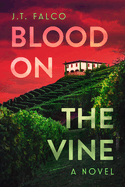
| Publisher: | Crooked Lane Books | |
| Genre: | Police Procedural, Mystery & Detective, Crime, Thrillers, Fiction, Women Sleuths | |
| ISBN: | 9798892421201 | |
| Pub Date: | April 2025 | |
| Price: | $29.99 |
| Mystery & Thriller |
by J.T. Falco
More than blood seeps into the soil of an elite Napa Valley winery in the outstanding Blood on the Vine. TV writer and showrunner J.T. Falco packs his first novel with murder, competitive businesses, family rivalry, greed, sex-cult rumors, controversial farming methods, and entitlement, but his smooth plotting and attention to fully realized characters ensure that this crime procedural doesn't seem overstuffed.
Lana Burrell has led a fairly isolated life for the past 22 years, ever since she fled her Napa home at age 17, when her father, Clifford, was convicted of murdering her best friend, Jessica Bancroft. Clifford, an artist, had designed bottle labels while managing the prestigious Golden Eagle Winery, owned by "Napa's First Family," the Bancrofts. Lana believes him innocent, but her prison visits to him have tapered. She is now a seasoned FBI agent in San Francisco's field office who avoids wine and Napa, preferring popcorn and beer, but reluctantly agrees to investigate the murders of two young women, who were both last seen at the Golden Eagle. Lana is surprised by the warm greeting she receives from Jessica's mother, Holly, and a somewhat civil meeting with the sheriff who arrested her father. Her investigation plunges her into a quagmire of business practices and family secrets as Lana reexamines her own choices. Her pairing with a chatty new 61-year-old deputy adds levity while allowing both women to shine.
Lana's cynical voice and perceptive insights, along with Falco's primer on viticulture, make Blood on the Vine an outstanding debut. --Oline H. Cogdill, freelance reviewer
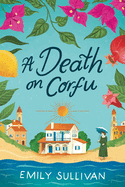
| Publisher: | Kensington | |
| Genre: | World Literature, Mystery & Detective, England - 20th Century, Fiction, Historical, Women Sleuths | |
| ISBN: | 9781496751416 | |
| Pub Date: | April 2025 | |
| Price: | $27 |
| Mystery & Thriller |
by Emily Sullivan
Emily Sullivan (Duchess Material) shifts from historical romance in A Death on Corfu, the first in a planned series. Set on the atmospheric Greek island at the turn of the 20th century, the novel is a delightful cozy mystery starring an English widow.
Minnie Harper's husband, Oliver, was a diplomat in Athens but retired from that hectic world for a small-scale export business on the island. His unexpected death left Minnie and their two children in a financially tight spot. Because Oliver wanted Minnie to raise their children on Corfu, rather than in the uptight upper-class English society they grew up in, she has managed to make it work through freelance typing and secretarial work. Her daily routine has scarcely varied in the four years since Oliver's death, but Minnie is content with the monotony of their little Greek haven.
Then famous mystery author Stephen Dorian, lauded nearly as much as his rival, Arthur Conan Doyle, comes to stay in the villa next to Minnie's. She agrees to do some typing for the handsome but curmudgeonly man and finds that he's unexpectedly kind. After Minnie and Stephen discover the body of a young Greek woman who worked as a maid to an English expat family, she begins to spend even more time with Stephen as they investigate the real-life mystery.
Clever and charming, A Death on Corfu is an excellent historical mystery. Emily Sullivan has created a fresh heroine sure to appeal to fans of Deanna Raybourn or A.M. Stuart. --Jessica Howard, former bookseller, freelance book reviewer
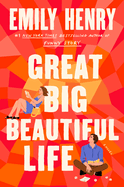
| Publisher: | Berkley | |
| Genre: | Women, Romantic Comedy, Romance, Fiction | |
| ISBN: | 9780593441299 | |
| Pub Date: | April 2025 | |
| Price: | $29 |
| Romance |
by Emily Henry
Emily Henry's talent for capturing great love stories with even greater life lessons is exceptionally striking in Great Big Beautiful Life. Alice Scott's dream job is to write the biography of Margaret Ives, the elusive heiress of the most influential media empire in the U.S. Margaret has hidden from the public eye and scrutiny for 20 years, but an anonymous e-mail exposing her location brings Alice one step closer to her desire to finally make her mother proud and uncover the truth behind the salacious headlines that once flooded newsstands.
When she arrives in the remote town of Little Crescent Island, Ga., Alice discovers that she's not the only one vying for the job. Her competition is Hayden Anderson, a Pulitzer Prize-winning biographer who is seemingly always glowering. As the two are forced to spend a monthlong trial period interviewing Margaret to determine who would be the better fit, the tiny island town (with very few coffee shops or restaurants) also forces Alice and Hayden together. With nondisclosure agreements and a delightful competition between them, the pair navigate deepening feelings for each other and a growing sense that Margaret is not telling either of them the whole truth.
Alice juxtaposes scandalous rumors of Margaret's past alongside Margaret's version of events, revealing her life's biggest tragedies, triumphs, and tremendous loves. Emily Henry (Beach Read; Book Lovers) combines a wildly entertaining scoop of 20th-century celebrity gossip with a satisfying slow-burn romance brimming with amusing rivalry and indisputable chemistry, made all the more compelling because of her nuanced characters. Both plots unravel to reveal the great, big, and beautiful things that make life truly worth living. --Clara Newton, freelance reviewer
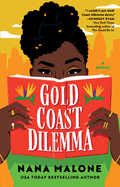
| Publisher: | Gallery Books | |
| Genre: | Women, Romance, Own Voices, African American & Black, Fiction | |
| ISBN: | 9781668061183 | |
| Pub Date: | April 2025 | |
| Price: | $18.99 |
| Romance |
by Nana Malone
In her first traditionally published novel, Gold Coast Dilemma, self-publishing powerhouse Nana Malone has written an exuberant romance with a dynamic female lead. When her big Ghanaian wedding gets called off in a public debacle, even the stalwart and determined Ofosua Addo falters. She's left trying to hide her rising anxiety in her workplace at Drake Publishing, and she's piqued that the man who's poised to become her boss doesn't seem to remember the electrifying kiss they shared a year ago.
And that man? Ofosua's friends start calling him "Hot Cole," while she insists that she hates him and the two spar with veiled barbs. It's a classic setup for Malone's expertly executed enemies-to-lovers story.
All the while, Ofosua is navigating a New York publishing company that's attempting to move into a new, more diverse era, despite its legacy of publishing white male literary types and hard-boiled detective novels. Drake appoints Ofosua as the editorial head of a new imprint that "will elevate new voices in commercial African American women's fiction." But her incredible competence and admirable assertiveness fight an uphill battle as she swims in a sea of microaggressions, such as when her reasonable disagreement with a bad idea gets deemed "aggressive."
When Hot Cole starts trying to help Ofosua fight the good fight, their conflicts deepen into fraught and enlightening discussions, including the complicated distinctions between allyship and white saviorism. As a romance develops between them, the challenges of their different worlds become clear. Gold Coast Dilemma is a fun, funny, and socially astute romance for fans of powerful female leads and layered conflicts. --Carol Caley, writer
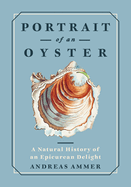
| Publisher: | Greystone Books | |
| Genre: | Nature, Life Sciences, Marine Biology, Ecosystems & Habitats, Oceans & Seas, Earth Sciences, Cooking, Science, Oceanography, History, Essays & Narratives | |
| ISBN: | 9781778401275 | |
| Pub Date: | April 2025 | |
| Price: | $22.95 |
| Food & Wine |
by Andreas Ammer, trans. by Renée von Paschen, illust. by Falk Nordmann
Andreas Ammer's Portrait of an Oyster is pure pleasure--an immersion in the science, art, philosophy, history, and gastronomy of a deceptively simple creature, the oyster. The oyster is no stranger to study; M.F.K. Fisher's classic Consider the Oyster probed facets of its importance. What sets Ammer's work apart is its sheer scope and the wealth of visual materials he includes. Falk Nordmann provides exquisite illustrations alongside facsimiles of paintings (for example, Édouard Manet's Luncheon in the Studio), photographs, detailed diagrams, and other historical artworks, even including a set of French collectible cards that pose the question, "What is an oyster?"
The many images complement the narrative, which explores the oyster's biology, evolution, and role in coastal ecosystems, in addition to its cultural significance. Portrait of an Oyster gracefully navigates the microscopic intricacies of oyster anatomy and the grander narratives of oyster cultivation and global trade, as well as the periods of individual indigenous oyster extinction and the expansion of non-native species.
It's all shared via elegant, engaging writing translated from the German by Renée von Paschen. Ammer's work is a delight to read for seasoned naturalists and for those with a less persistent fascination with the oyster. Consider this passage, in which Ammer pithily describes the Pacific oyster: "They might be called 'gender-fluid' in the terminology of the contemporary LGBTQ+ community. The scientific term is 'sequential hermaphroditism.' "
Portrait of an Oyster is a beautifully crafted tribute to a remarkable creature and a testament to the power of natural history writing to reveal and revel in the hidden wonders of the world. --Elizabeth DeNoma, executive editor, DeNoma Literary Services, Seattle, WA

| Publisher: | HarperOne | |
| Genre: | Biography & Autobiography, Women, Art, Movements, Europe, Intelligence & Espionage, Wars & Conflicts, 20th Century - Holocaust, History, European, Survival, World War II - General, Modern, Art & Politics, General, France, Modernism, Historical, Military | |
| ISBN: | 9780063295896 | |
| Pub Date: | May 2025 | |
| Price: | $29.99 |
| Biography & Memoir |
by Michelle Young
In The Art Spy, Michelle Young details the work of French museum curator Rose Valland, who fought to protect the artistic and cultural heritage of Europe. By Valland's estimation, during World War II about one-third of personal art in France was looted by the Nazis and their collaborators. That such an accounting even exists is thanks to her eyewitness records. Valland had one directive during the Nazi occupation of France: no matter what, stay at the Jeu de Paume museum and protect the art. Before the war broke out in full, Valland championed art from countries under threat by the Nazis. But this directive turned her from a curator who fought for recognition in her career to a resistance spy.
Valland used her knowledge of art and artists as well as her meticulous observational habits and photographic memory to document the large-scale looting and theft from national collections and those seized from private citizens, particularly French Jewish families. As Young recounts, Valland's notes from her time working at the Jeu de Paume during its Nazi occupation provide a new angle on the deliberate dehumanization of Jewish people through the appropriation of their possessions, art, and homes. Her notes personalize the evils by attributing specific thefts, as well as stated antisemitism, to specific actors, some of whom tried to distance themselves later in life from what they did. Young's accounting of Valland's life, reconstructed from her documents and personal archives, shines light on a hero of the art world whose name has slipped from history, though the impact of her work for justice and restitution is still felt. --Michelle Anya Anjirbag, freelance reviewer
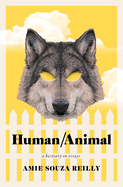
| Publisher: | Wilfrid Laurier University Press | |
| Genre: | Biography & Autobiography, Memoirs | |
| ISBN: | 9781771126809 | |
| Pub Date: | April 2025 | |
| Price: | $22.99 |
| Biography & Memoir |
by Amie Souza Reilly
In her debut memoir-in-essays, Human/Animal, Amie Souza Reilly examines a distressing period of her life through the lens of animal metaphors. By engaging with literary theory, she transcends the personal to depict the persistence of societal violence.
For several years, Reilly's family was stalked by the next-door neighbors, brothers in their 60s whose aggression unsettled them. Jim and Wes would peer through the windows of Reilly's house, follow Reilly's husband on his commute, and mow into their lawn. If Reilly failed to return a greeting, they would yell, shaming her for modeling rudeness for her son. Reilly's real estate agent dubbed the brothers "mostly harmless," but other neighbors reported similar interactions. The situation came to a head when Jim and Wes used their vehicle to barricade Reilly and her son in the driveway; she called the police.
"I am looking wherever I can for reasons" for this predator-prey relationship, Reilly writes. To that end, her short bestiary entries offer analogies for human behavior. Animal names, she noticed, are often derogatory when used as verbs: "to badger" is to pester; "to worm" is to manipulate. The interlocking essays also draw on feminist and postcolonial commentary to illuminate the power dynamics imposed by (usually white) men, and how these strictures made Reilly "feel powerless while it rendered them powerful." It's not always apparent how the animal imagery applies, but it's fascinating to watch the connections build, with topics including performance art and slasher films. Meanwhile, the brothers' story is stranger than fiction. Reilly captures the intensity of fear and claustrophobia in an unconventional book ideal for readers of Leslie Jamison. --Rebecca Foster, freelance reviewer, proofreader and blogger at Bookish Beck
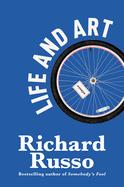
| Publisher: | Knopf | |
| Genre: | Biography & Autobiography, Literary Figures, Literary Collections, Memoirs, Essays | |
| ISBN: | 9780593802168 | |
| Pub Date: | May 2025 | |
| Price: | $28 |
| Essays & Criticism |
by Richard Russo
Though he's best known as the author of novels including his Pulitzer Prize-winning Empire Falls and the North Bath trilogy, Richard Russo is also a perceptive and empathetic essayist and critic. That skill is manifest in his second nonfiction collection, Life and Art.
In the seven pieces that compose the book's "Life" section, Russo (The Destiny Thief) examines America's troubling tribal culture ("Stiff Neck"), considers the effect of the Covid-19 lockdown on his writing life ("Triage"), and tells a remarkable story of how a lost wedding ring reminded him that "stories... are incubators of meaning" ("Meaning"). Several of the remaining essays in this portion reflect from different angles on his relationship with his parents and his upbringing in the mill town of Gloversville, N.Y., named for the industry that provided its main source of employment until its collapse and that inspired him to create its fictional alter ego.
In Life and Art's "Art" section, Russo offers six essays that touch on an assortment of topics related to the writing and teaching to which he has devoted his life. In "Words and Their Arrangement," he efficiently dissects iconic singer-songwriter Townes Van Zandt's song "Pancho and Lefty" to reveal how "great art, it seems, can be made of humble materials."
That statement is an apt characterization of Russo's own approach to his craft. As is true of his fiction, he's a direct and plainspoken stylist. But that lack of affectation should not be confused with an absence of depth. Despite their brevity and transparency, Life and Art's insightful explorations offer more grist for contemplation than many longer and superficially more complex works. --Harvey Freedenberg, freelance reviewer
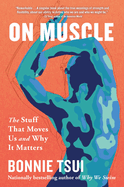
| Publisher: | Algonquin | |
| Genre: | Life Sciences, Cultural & Social Aspects, Biography & Autobiography, Inspiration & Personal Growth, Body, Mind & Spirit, Science, Human Anatomy & Physiology, Sports & Recreation, Medical, Physiology, Sports | |
| ISBN: | 9781643753089 | |
| Pub Date: | April 2025 | |
| Price: | $29 |
| Starred | Science |
by Bonnie Tsui
In the spirit of Better Faster Farther by Maggie Mertens, On Muscle by Bonnie Tsui (Why We Swim) takes readers on more than a simple anatomical journey. Along with descriptions of what muscles do and why they matter, Tsui shares stories of growing up with a physically active father and learning to love moving her body. Filled with conversations with experts such as Jan Todd, a kinesiology professor and power lifter who once famously lifted the Scottish Dinnie Stones (which have "a combined weight of 733 pounds"), Tsui's analysis makes muscles irresistibly interesting.
Tsui's not afraid to tackle serious subjects, with chapters such as "Who's Afraid of a Lady Hercules" that handle subjects like sexism, racism, and transphobia with compassion. In "Remembrance of Exercises Past," Tsui discusses epigenetics and encourages readers to begin or continue their fitness journeys to live longer, healthier lives.
Perfect for fans of Mary Roach, On Muscle shines light on the muscular system, why it's important, and how it can be properly maintained. The book is full of fascinating facts (like how muscles are responsible for goose bumps), and even the most knowledgeable readers are sure to come away with something new. The interspersed family stories provide a backbone for the science, not just telling but also showing readers the whys and hows by applying the information.
Energizing, friendly, and never preachy, On Muscle feels like the best kind of coaching. Readers may just find themselves inspired to pick up some weights after they've put the book down. --Alyssa Parssinen, freelance reviewer and former bookseller
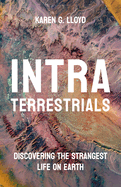
| Publisher: | Princeton University Press | |
| Genre: | Life Sciences, Earth Sciences, Geology, Microbiology, Science | |
| ISBN: | 9780691236117 | |
| Pub Date: | May 2025 | |
| Price: | $27.95 |
| Starred | Science |
by Karen G. Lloyd
More than a look at tiny organisms living within the earth, Karen G. Lloyd's Intraterrestrials is a thrilling jaunt through scientific research and the experiences of a scientist. Lloyd's delight in her work shines across the pages and generates appreciation and excitement for even the most tedious aspects of research.
Lloyd, who is professor of earth sciences and the Wrigley Chair in Environmental Sciences at USC, eases readers into a world many people tend not to think about as she describes the habitat beneath the surface of Earth and the methods used to study this microscopic life. She then brings readers deeper by looking at how intraterrestrials survive in an environment so alien to the surface and how the discovery of the immense diversity of these tiny life-forms radically changed scientists' understanding of the evolutionary tree. Finally, Lloyd details how intraterrestrials explain why life on Earth formed in the first place and how they can point a way to a future free from the devastation of climate change.
Through her energetic tone, Lloyd makes microscopic organisms dynamic and full of personality. She illustrates the circumstances of scientific fieldwork, the methodology of which rarely makes it into scientific publications, she points out. She emphasizes the collaborative nature of her work and gives the layperson peeks behind the curtain of scientific communities, including a scientist exclaiming "bullshit" at an academic conference and a casual dinner conversation about solving obstacles in the scientific process. Laden with plenty of complex concepts such as DNA sequencing and thermodynamics, Intraterrestrials is nevertheless accessible and enthralling to readers at all levels of scientific expertise. --Dainy Bernstein, freelance reviewer

| Publisher: | Scholastic Press | |
| Genre: | Caribbean & Latin American, Water Sports, Adolescence & Coming of Age, Sports & Recreation, Legends, Myths, Fables, Social Themes, Juvenile Fiction | |
| ISBN: | 9781338068559 | |
| Pub Date: | May 2025 | |
| Price: | $18.99 |
| Starred | Children's & Young Adult |
by Pam Muñoz Ryan, illust. by Joe Cepeda
Children's Literature Legacy Award-winner Pam Muñoz Ryan (Mañanaland) delivers a sweeping, lyrical work of middle-grade magical realism about resilience, nature, and human connection. Ryan crafts a mythical story, illuminating the ways in which El Niño shapes both the environment and personal destinies.
It's the summer before Kai Sosa's eighth grade year, and he has been selected to compete on an elite swim team, the Aquarius Aquatics. He hopes that he will be able to live up to his family's history of powerful swimmers, but Kai, the "heir apparent," is having problems keeping up with the rigorous workouts, and cannot match the skill his sister, Cali, once displayed. But Cali disappeared two years ago, and the Sosa family is still feeling the aftershocks. Kai finds a beloved library book of Cali's that tells the story of Queen Califia, the Amazonian queen for whom Cali (and California) is named. "Her Realm, a labyrinth of cobbled streets bordered by rock houses trimmed in mother-of-pearl, was most famous for its towering mountains encrusted with gold." Through Queen Califia, Kai finds a gateway--both figurative and literal--to processing his grief over Cali's disappearance.
El Niño addresses many issues, including climate change, migration, survival, loss, and hope. Ryan's use of magical realism blends and enhances the story of grief, displaying the author's poetic finesse and skill at developing emotion. Delicate blue-scale illustrations by Joe Cepeda (Sumo Libre) skillfully assist the text in separating Kai's world from Queen Califia's. Fans of The Canyon's Edge by Dusti Bowling and Crenshaw by Katherine Applegate will surely be captivated by this stunning novel. --Shannan Hicks, librarian

| Publisher: | Greenwillow Books | |
| Genre: | Emotions & Feelings, Superheroes, Astronauts & Space, Birds, Juvenile Fiction, Science Fiction, Friendship, Humorous Stories, Animals, Space Exploration, Technology, Social Themes, Action & Adventure | |
| ISBN: | 9780063373587 | |
| Pub Date: | May 2025 | |
| Price: | $19.99 |
| Starred | Children's & Young Adult |
by Corey R. Tabor
A stern-tempered corvid guards an astonishing secret in the disarmingly adorable, sneakily hilarious picture book Cranky Crabby Crow (Saves the World) by Caldecott Honor winner Corey R. Tabor (Mel Fell; Papilio).
Crow, a small blackbird with an oversized head and stick legs, stands in his place on the power line and glares from under his floating unibrow. A host of twee, conventionally adorable would-be animal friends arrive one by one, only for Crow to banish them with a severe "KAW!" Eventually Cat warns him of becoming a "lonely crow shouting at the world" but meets the same response. Finally alone, Crow gets a call on the phone hidden in the equipment box. A voice commends him for clearing the area and tells him, "The world is counting on you." Crow promptly takes a hidden elevator in the power pole to a subterranean base, dons a spacesuit complete with tail pocket, and blasts off in a rocket to destroy an asteroid headed straight for Earth. Mission accomplished, Crow hosts a twilight power line party for the other animals, who watch the light show that is the asteroid fragments burning up in Earth's atmosphere.
Tabor subverts the trope of the grouch who learns the lesson of loneliness in a story that portrays a real, albeit absurdist, need for alone time. The sweet, simple characters are usually shown against a dreamily washed-out blue sky. Short sentences should make this story easily digestible for little readers, while their grownups should appreciate the meteoric plot twist. Expect a KAW-rus of laughter. --Jaclyn Fulwood, youth services manager, Allen County Public Library

| Publisher: | Neal Porter Books | |
| Genre: | General, Juvenile Fiction | |
| ISBN: | 9780823458493 | |
| Pub Date: | May 2025 | |
| Price: | $19.99 |
| Starred | Children's & Young Adult |
by Jason Chin
In Hurricane, Caldecott and Sibert Medalist Jason Chin (Watercress; Life After Whale) delivers another sensational work of creative nonfiction that features precise details and exacting illustrations.
"A storm is raging over the Atlantic Ocean." But it's no ordinary storm, it's a hurricane, with "howling winds, raging waves, and torrential rains [that] can cause terrible destruction." And it's heading toward the east coast of North America. Luckily for people who live in its path, the storm is being watched by a weather satellite hovering 22,000 miles above Earth, meteorologists at the National Hurricane Center in Florida, and brave hurricane hunters who pilot their "airborne weather station[s]" into the very storm itself. Informed residents know to prepare with emergency supplies; they fuel cars, check on neighbors, board up windows, and when forecasts indicate lives may be at risk, these residents lock their doors and leave.
Chin's fascinating, information-packed narrative tracks the hurricane day by day, describing the violent storm and its effects on the residents in its path, while sidebars and back matter explain related topics. His pen, ink, watercolor, and gouache illustrations gracefully and diligently depict both the meteorology and the urgent-yet-measured approach informed residents might take. Chin demonstrates the extreme importance of weather monitoring in general, and hurricane tracking in particular, offering a welcome presentation of how they can be vital to human safety and emergency preparedness. Hurricane is a top-notch addition to the strong body of hurricane picture books for children. --Lynn Becker, reviewer, blogger, and children's book author
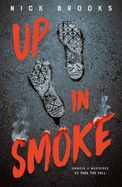
| Publisher: | Holt | |
| Genre: | Crime, Mysteries & Detective Stories, Romance, Contemporary, Thrillers & Suspense, Social Themes, Activism & Social Justice, Young Adult Fiction | |
| ISBN: | 9781250359933 | |
| Pub Date: | May 2025 | |
| Price: | $19.99 |
| Children's & Young Adult |
by Nick Brooks
In this gripping, exhilarating YA murder mystery, two childhood friends work together to uncover who murdered a young woman during a police protest.
Cooper King, a Black teen from Washington, D.C., reluctantly agrees to help his mentor and big brother figure, Jason, loot during a protest--a Black 14-year-old was brutally murdered by a cop and people have taken to the streets. Cooper expected to be the lookout but ends up ransacking the place with the group. Gunshots ring out, a young woman is killed, and Jason becomes the lead suspect for her death. Cooper, who ran from the scene of the crime, is scared he'll be arrested next. Jason's sister and Cooper's longtime crush, Monique, is convinced Jason isn't the killer; she decides to work with Cooper to find out who the murderer truly is. Their investigation leads them through a web of deception, cover-ups, and threatening twists--some initiated by Cooper himself, manipulating evidence to keep Monique from learning he was with Jason. As Cooper and Monique fall for each other, Cooper must keep his secret from Monique, exonerate his friend, and try to stay safe himself.
Nick Brooks (Promise Boys) delivers another engrossing, rapidly paced thriller in Up in Smoke, his second work for young adults. The story is told through Cooper's and Monique's alternating points of view, giving readers direct access to the emotional stakes for each character. Brooks does not shy away from tackling difficult subjects like systemic racism and the oppression of marginalized communities. Up in Smoke is a riveting murder mystery that should appeal to fans of Tiffany D. Jackson and Jade Adia. --Natasha Harris, freelance writer
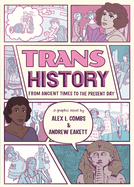
| Publisher: | Candlewick | |
| Genre: | Biography & Autobiography, Young Adult Nonfiction, General, History, Comics & Graphic Novels, LGBTQ+ | |
| ISBN: | 9781536219234 | |
| Pub Date: | May 2025 | |
| Price: | $24.99 |
| Children's & Young Adult |
by Alex L. Combs, Andrew Eakett
First-time graphic co-creators Alex L. Combs and Andrew Eakett--who are neurodivergent, trans, and partners--present their illuminating Trans History: From Ancient Times to the Present, an informative antidote to the accelerating misinformation surrounding trans people, further necessitated by the "unprecedented number of anti-trans laws introduced and passed in the US."
The duo's goals are three-fold: to dispel myths that trans people are a new phenomenon; highlight the diversity of trans experiences; and empower trans people. They open in 4000 BCE with Mesopotamian goddess Ishtar/Inana, notable for having followers "whose maleness Ishtar turned female, for the awe of the people." Ancient Egypt had Pharoah Hatshepsut, "raised to be a queen but instead became a king." Fourteenth-century sex worker "John Rykener, calling [herself] Eleanor" claimed in court that "Priests pay the best." Meanwhile, throughout the Americas, European colonialism attempted to destroy Indigenous understanding and presentations of non-binary gender. Subsequent chapters consider the science of sexology and the conversation around medicalization, then explore trans activism and media representation. Chapter five proves most affecting with real-life (and death) experiences of being trans, including Eakett's personal story.
Chapters feature color-coded palettes, visually dividing topics and historical periods. Various illustrative styles throughout include meticulously detailed realism and simplified cartoon-like characterizations. The creators readily admit their "specific viewpoint" as "two trans white-passing Americans raised in the US." They thoughtfully balance their "culturally dominant Western biases" with the work and words of an impressive cast of historians and scholars, while carefully annotating and indexing sources. An impressive village emerges to share a diverse history more necessary than ever. --Terry Hong